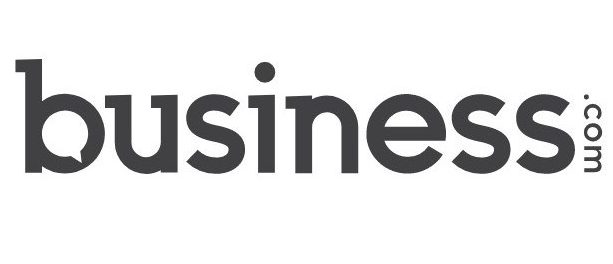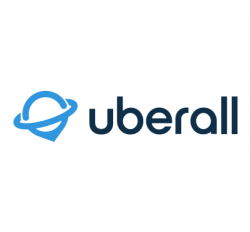Bonus Content – Mobile-First SEO for Law Firms: Are You Ready?
Date: January 30, 2024

In January of 2024, Joe Giovannoli, founder and CEO of 9Sail, discussed mobile-first SEO and law firm website optimization on a webinar with two key players at 9Sail: Bryan Pattman, partner and Director of Operations, and Taylor Tobey, Digital Strategist. Beyond the mobile-first information, the conversation branched into other digital marketing topics, from website optimization to click-through rates. In this blog, see the questions that went beyond the question of mobile-first and read what our experts had to say.
What is A Rich Snippet on Google?
A main goal for Google is for its search engine results page (SERP) to serve users the right answer on the first try. One way they do this is to pull an answer to a posed question and present it as a “rich snippet.” In order for your law firm website to be considered for a rich snippet, we recommend giving a succinct and complete answer in the vein of an encyclopedia entry to the question being posed. While having the rich snippet for a question may mean you get fewer clicks into the website by virtue of the answer being shown on the SERP, there’s a huge positive impact in having your firm show up consistently at the top of the results as an expert in the field.
Is It Better to Have a Delay in Your Popups?
Bryan believes it’s better to have a delay in your popups on mobile, rather than having an instantaneous popup block your website’s text. From a user perspective, he finds popups on mobile distracting, and suggests that doing A/B testing can tell you which is more detrimental to your sales funnel and conversion tracking.
Taylor mentions that as a user, a delayed popup might be confusing, and reminds attendees that the end goal is to make the user experience as good as possible. She recommends visiting your law firm’s mobile site yourself through the eyes of a user– if you’re on your own site and are frustrated or confused, that gives you a good sense of how new users are feeling.
From Joe’s perspective, if he is reading a piece of content and receives a popup down the line, his reaction depends on what the popup is. For example, if the popup serves to bring the user to a related piece of content or webinar, that can be helpful. That being said, he recommends avoiding having a popup on your mobile site, as this vastly improves user experience.
Content Strategies That We Deploy for Clients
Especially with blogs, the biggest thing we like to ask our clients relates to intake. What questions are your intake team being asked repeatedly? This provides you with a great place to start, because you know that potential clients are searching for the answers to these questions. We also recommend making sure there’s volume behind what you want to talk about– you may have a spectacular blog written, but without the demand for it, you may be wasting your time.
In addition, Google wants to have human expertise, especially in this age of AI-generated content that provides little value. Including real-life examples in your expert-written content will help you shine above the rest.
Joe’s recommendation is to address the core clientele in each of your practice areas to ask them what type of content they consume, and where they typically consume it. What do they like about the content they consume? More often than not, if you’re seeking more clients who match your ideal profile, they likely have similar habits. Once you have this information, you can build your content in a way that’s specifically appealing to your ideal client profile.
Free Sites and Apps for Finding Keyword Volume
Moz has a keyword explorer analysis tool that gives you 3 free searches per day. Additionally, two of our team favorites are Ahrefs and SEMrush. Ahrefs offers a 7-day trial for $7 to see if it’s the right tool for you. Ahrefs provides accurate keyword numbers, while SEMrush has a very strong technical side.
Google offers several tools that allow you to research keywords and plan your strategy. In Google Search Console, you can sort the data relating to keywords you rank for to see what questions you may not answer directly for which you still appear in search. Google Ad Manager has a keyword planner that also gives you a rough estimate of volume. Another great free Google feature is Trends, which can give you solid keyword volume data, along with seasonality for when certain topics experience higher popularity.
While keyword volume is a factor we consider in law firm SEO when planning your strategy, it’s important not to get caught up on it. Sometimes, a term with limited or no volume is still the right term for you. For example, if your law firm exists in a niche space and you choose to target long-tail keywords, those will naturally have a lower volume. However, while you may only have seven people searching for that term, those seven people are seriously looking for the related information, and are more likely to pick up the phone and call your firm. This also helps to build trust with potential clients, as it shows expertise on information that nobody else has covered.
Impressions Vs. Click-Through Rate in Google Search Console
At 9Sail, we’re focused on clicks or impressions more than we are on click-through rate (CTR). Not only do clicks and impressions give you a sense of CTR, but at the end of the day, our goal is to get the page in front of as many qualified users as possible, and clicks demonstrate to us whether a piece of content has reached the right audience. If you have thousands of impressions but very few clicks, it indicates a problem that’s worth pursuing. For example, the topic may be good but the content is outdated. This gives you a good pulse check for how your content is measuring up.
SEO Timeline During the Website Redesign Process
We often see that when firms bring in SEO before the redesign process for a law firm website has even begun, it often cuts down on redesign time. This is because by engaging an SEO team with whom you’ve discussed the direction of the site, you already know what you want the focus of the site to be, saving time and cost. While you can engage SEO services at any point during the redesign process, bringing SEO in later may result in a slower redesign process because you may have to backtrack work that’s already been completed. That being said, don’t let a little additional time or cost deter you because not having that SEO support at all can result in astronomical troubles, from broken links to poor content.
Ultimately, the faster you can get content going, the faster you can get your website off the ground.
Starting the SEO Process
If you’re starting your SEO efforts from the ground up, content is a very good place to start. Very often, law firm websites find themselves full of practice area pages with no information, no personal touches, and little personality. We tend to start the process with content that demonstrates your expertise. As that is being written, we’ll look at all the technical aspects of the site to ensure that users have the opportunity to convert with ease, bringing you more paying clients.
Taylor recommends that as you begin to optimize your law firm website content, make a list for prioritization. It can be extremely overwhelming to realize how many pages you may be missing and how much work there is to do. Going slowly, practice area by practice area, and page by page can make the process less daunting.
Joe agrees and says that not all practice groups are created equal when it comes to website content. After all, some will perform better on search than others. Think about where your efforts will make you the most bang for your buck.
Speaking of making more bang for your buck, we invite you to attend 9Sail’s February webinar, Invest with Confidence: Tips for Tracking and Measuring the Success of Your Marketing Dollars. We hope to see you there!
















